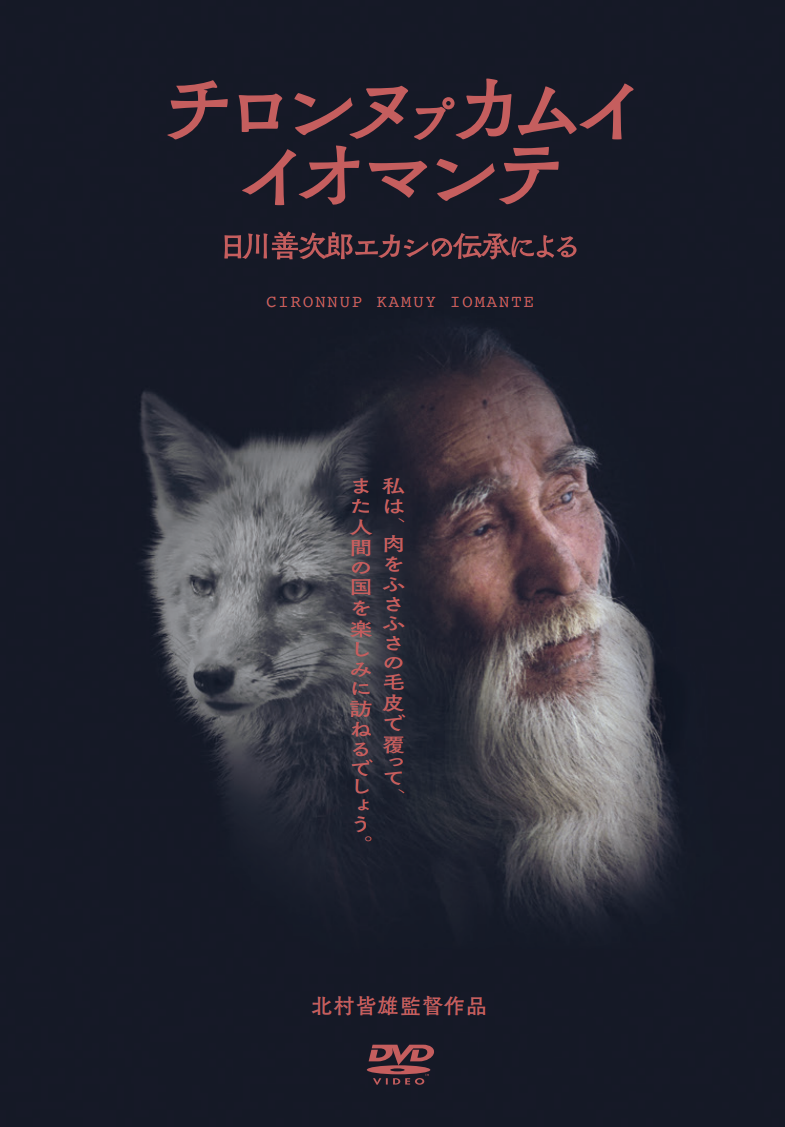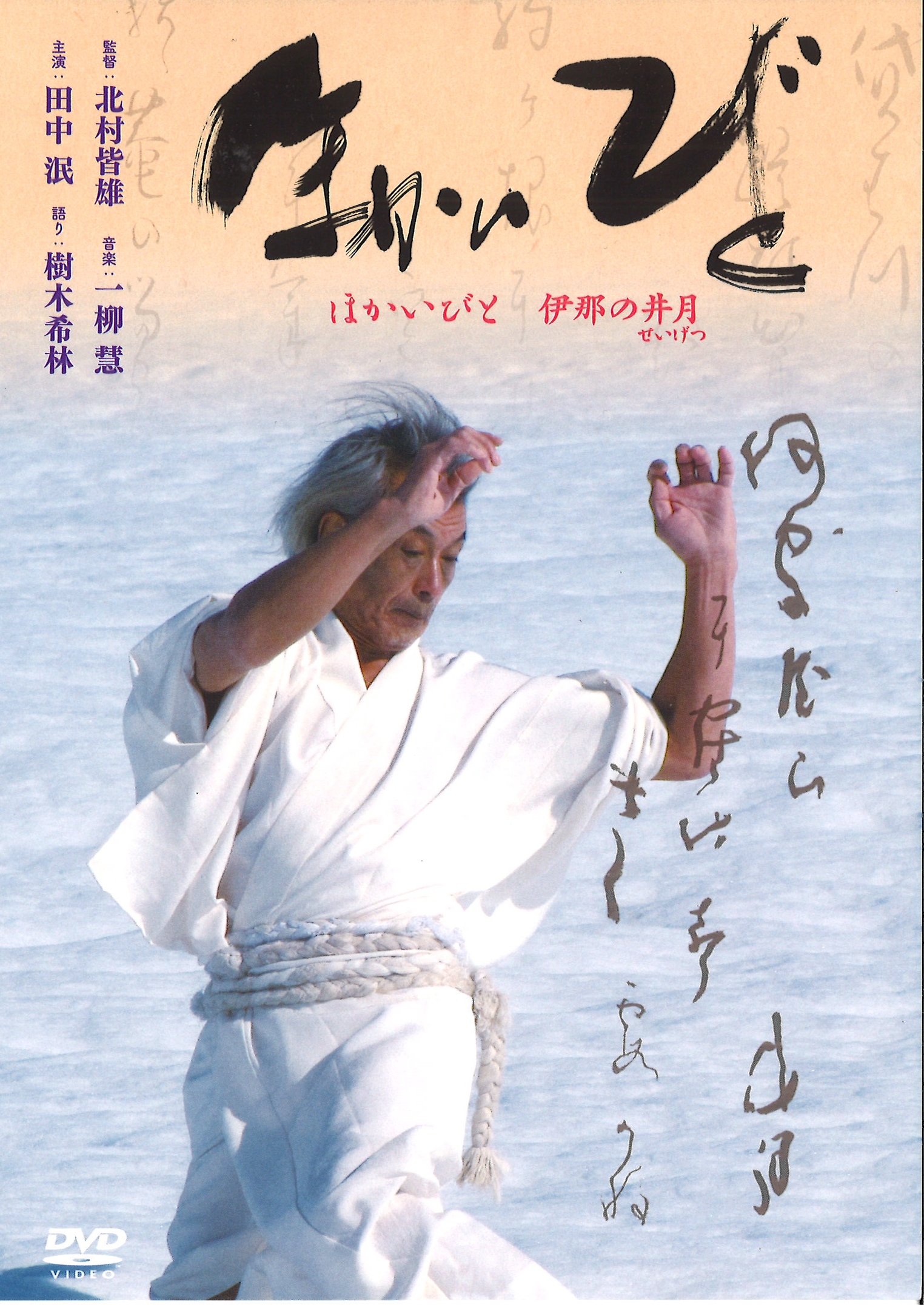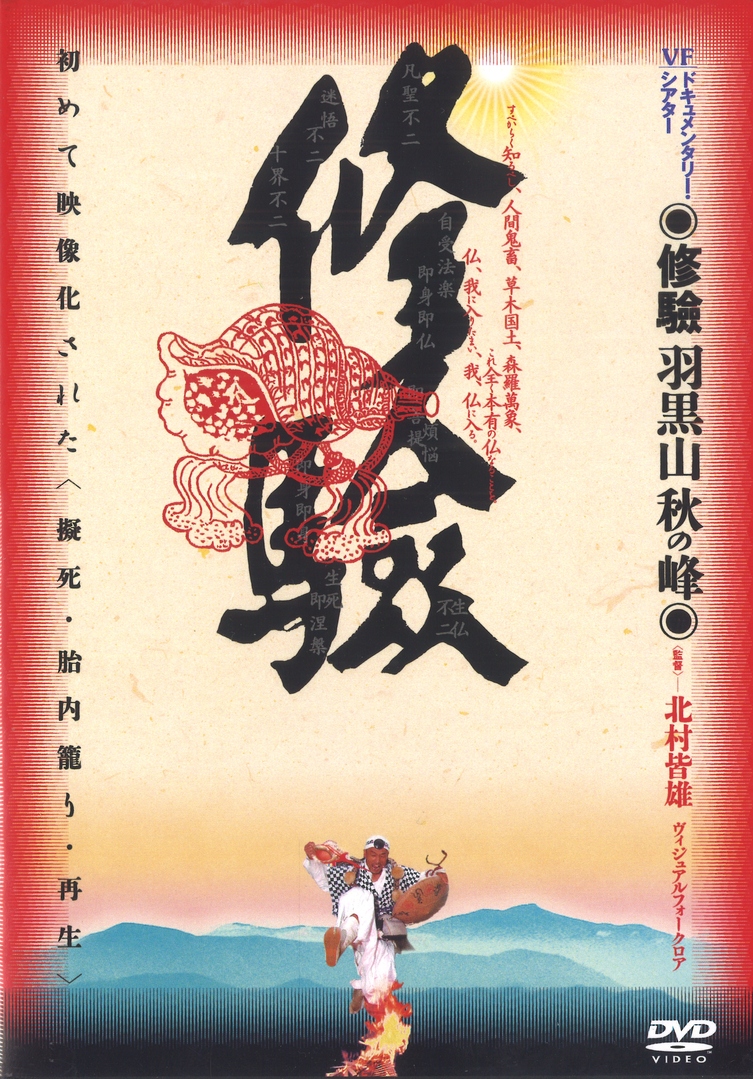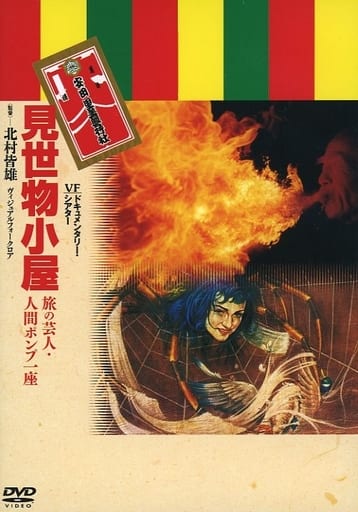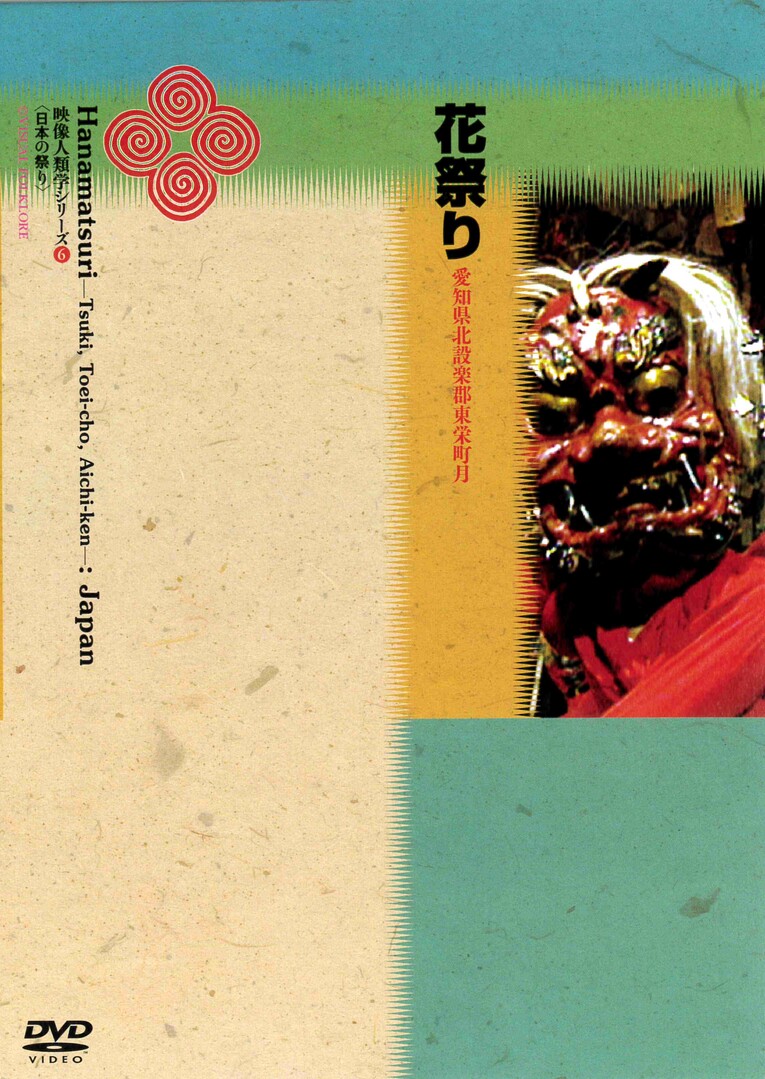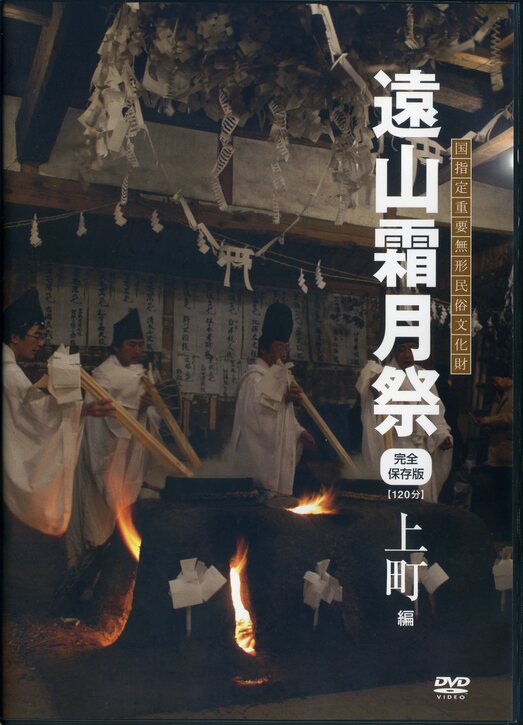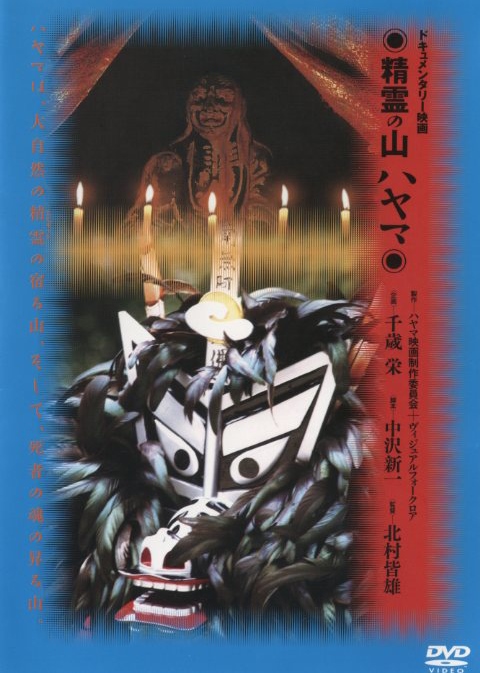In search of Asian life
and folk customs
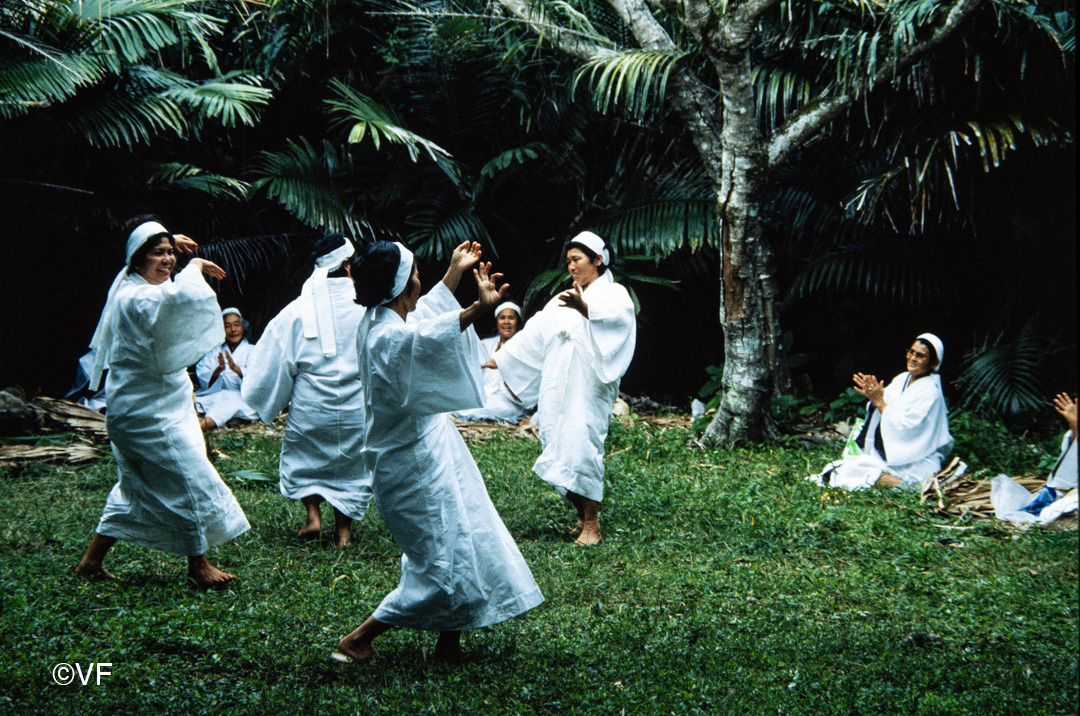
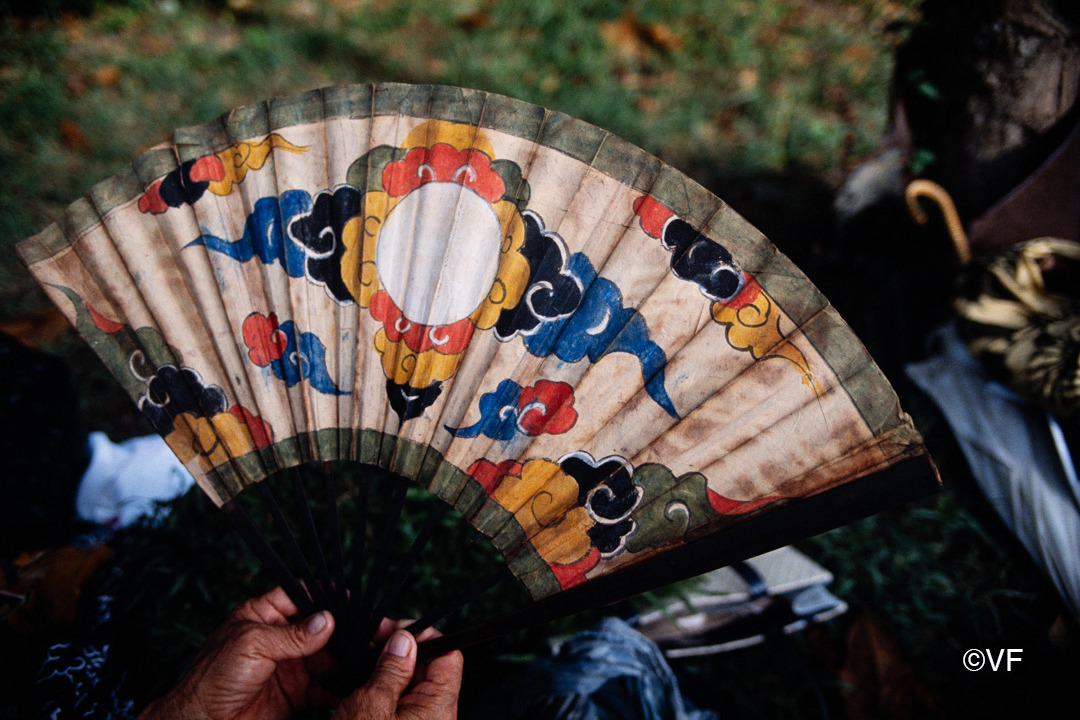
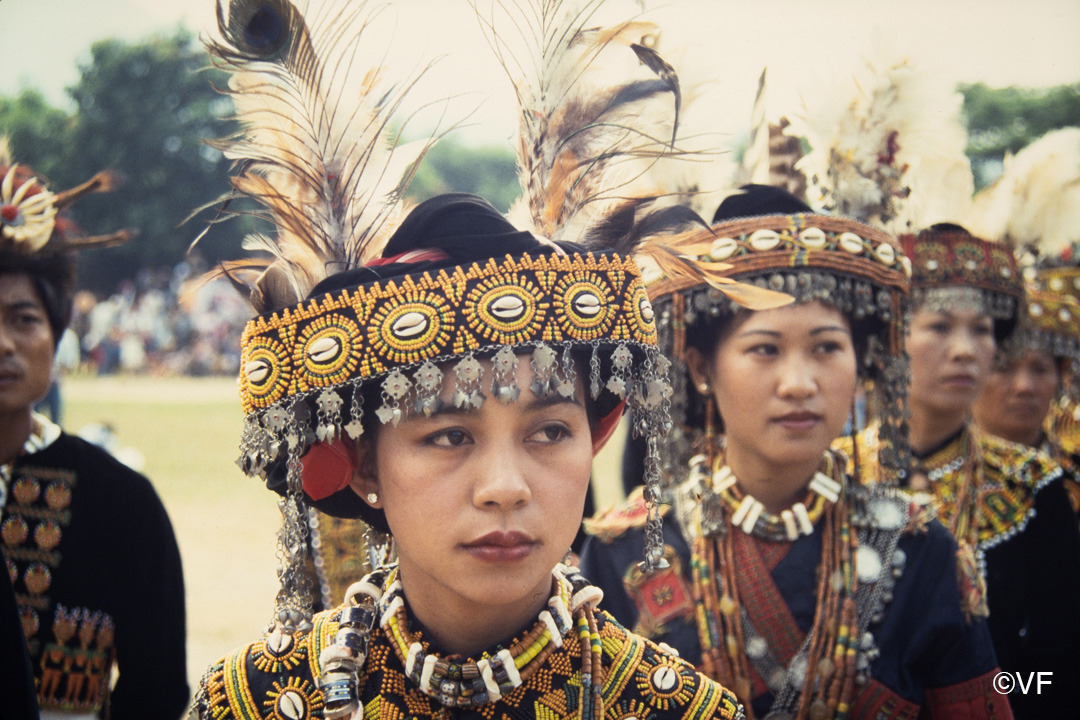

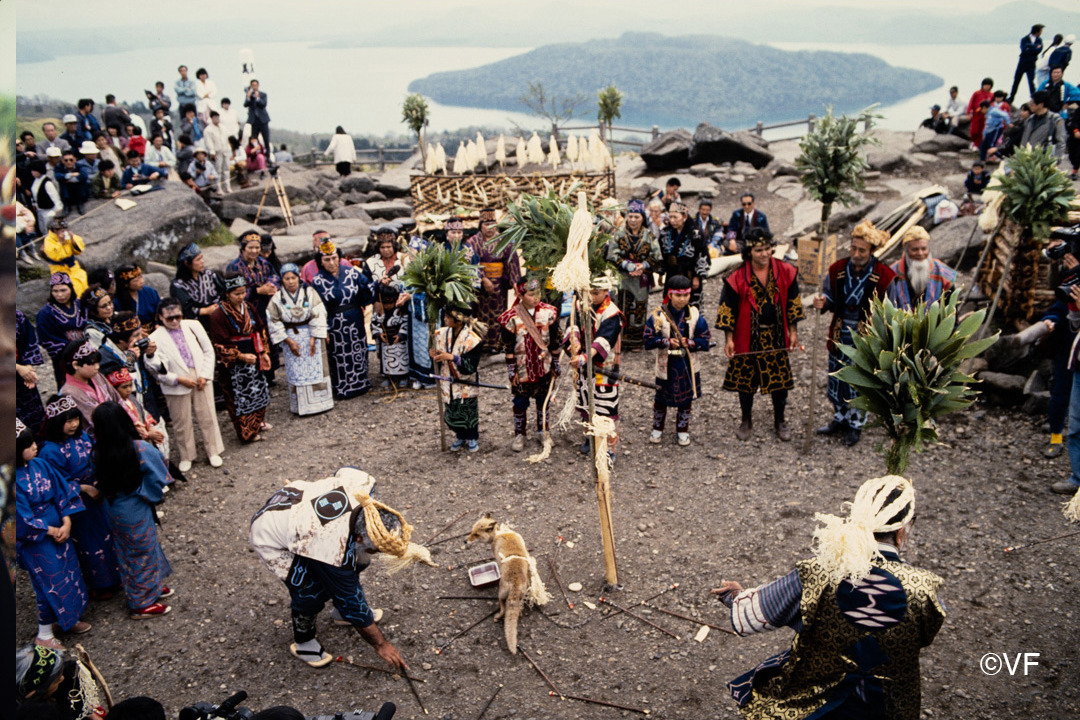
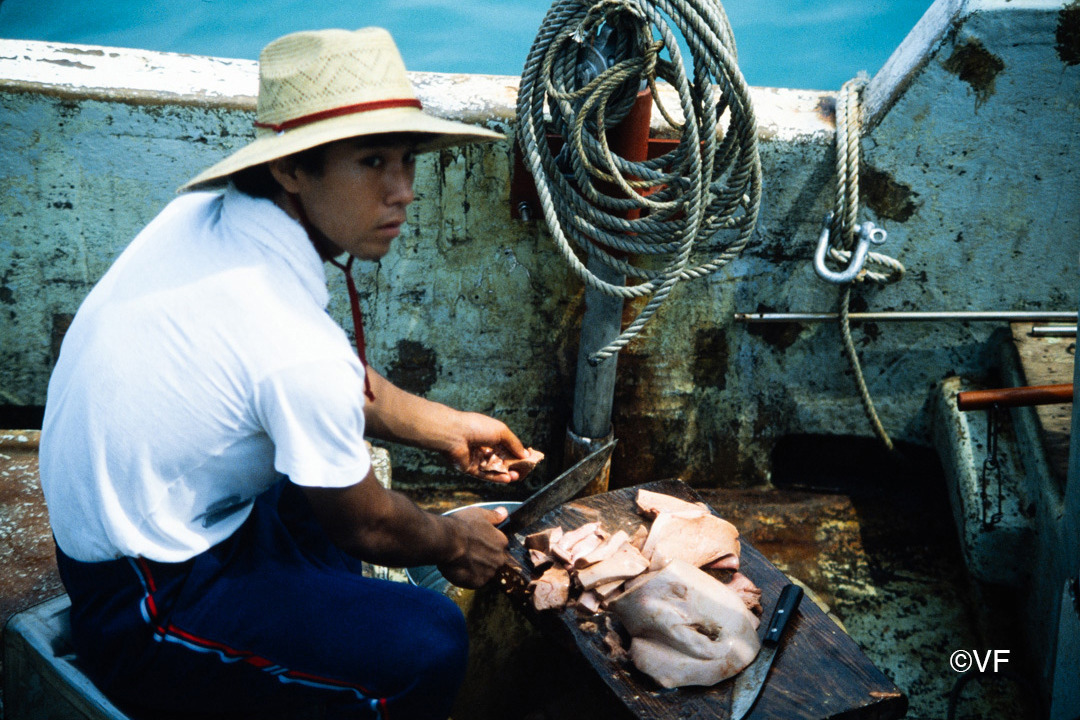
ABOUT US
VISUAL FOLKLORE INC.
| Address: | 3F OSK Catherina Bldg., 1-12-12 Shinjuku, Shinjuku-ku, Tokyo 160-0022, Japan |
|---|---|
| Tel: | +81-3-3352-2291 |
| Fax: | +81-3-3352-2293 |
| e-mail: |
Filmography
Documentary Film Works
| 2019 | DEVAKI -SACRED WOMEN IN NEPAL (76’) |
| 2018 |
THE RICE GRANARY OF ONE HUNDRED YEARS (99’) BIRTHING HUT ON THE SHORE (77’) |
| 2017 | KAGRA TROOP ON THE BEAT (94’) |
TV Documentary Works
Commercial DVD/Videos
| 2013 |
OZE, A MIRACLE WETLAND (49’) for NHK ENTERPRISES |
| 2011 |
THE GRAND BUDDHIST MASTER, KU-KAI: HIS GREAT TREASUER AND LIFE (90’×3) for NHK ENTERPRISES THE GRAND BUDDHIST MASTER, KU-KAI AND THE GREAT TREASURE OF TOJI TEMPLE (40’×3) for NHK ENTERPRISES |
| 2008 |
THE PEAKS OF JAPAN (65’ x 10) A video series to introduce 30 famous peaks of Japan. for U-CAN |
| 2003 |
JAPAN’S NATIONAL PARKS (60’ x 10 ) A video series to introduce 28 National Parks of Japan. *Out of them, VF covered 9 National Parks in Hokkaido and Tohoku. for U-CAN |
| 2002 |
TRAVELOGUE ALONG THE CHANG JIANG RIVER (60min. x 8) A video series to introduce it’s nature, culture, history and people, tracing from the river mouth to the source. for U-CAN |
VF Visual Library
Visual Folklore Series
Series #01
Byolshin-Kut: Shamanic Rites-The Moodang of the East Coast of Korea
【DVD/ 53min.】*Japanese version only
Along the east coast of Korea, villagers call in the Moodang (a family group of shamans whose ancestors, since time immemorial, have also been shamans), to pray for peace, a good harvest, and a good catch of fish. This documentary records their ritual performance, one of Korea’s living national treasures.
Series #02
Indra Jatra – Goddesses of Nepal and the Pillar-raising Festival
【DVD/ 42min.】*Japanese version only
The Deification of the Girl-goddess Kumari and the Pillar-raising Festival
This documentary is a comprehensive introduction to the huge Indra Jatra festival. The festival has many complex historical, ethnic and religious levels of meaning that have been added over the ages. An important aspect of the festival is the deification of a young girl as the goddess Kumari. The King of Nepal, who hosts the festival, needs to be blessed by Kumari during the festival in order to legitimize his right to rule Nepal. Another important aspect of the festival is the pillar-raising. A sacred pine tree is cut down, dragged back from the mountains and raised in front of the Palace. It is thought that Indra, the head of the Hindi pantheon, descends to earth down this pine pillar. This film enables viewers to understand Nepal, a country of diverse cultural influences.
Series #03
Izaiho(1966) – The Island of Goddesses, Kudaka Island, Okinawa
【DVD/ 18min.】*Japanese version only
A rite performed once every twelve horse years on Kudaka Island, a sacred site of the Ryukyu Dynasty. Once the women of the island are married with children, they are expected to go through a shaman initiation ceremony. Only then can they join ritual groups, which bless the island and give protection to their menfolk. This was the first time that the ritual was filmed and is thus an extremely important record. The rite is no longer performed after 1978.
Series #04
Asakusa, Markets on the Days of the Cock in November
【DVD/ 35min.】*Japanese version only
Everyone looks forward to the annual November festival at Otori Shrine in Asakusa, the old downtown area of Tokyo. This film introduces customs from Edo-era Tokyo that still survive today, such as the haggling that goes on between the makers of the traditional pitchfork good-luck charms and their buyers and sellers. Pitchforks are thought to be symbols of luck as they can help you to ‘rake in’ wealth and happiness. This documentary is a collaboration between cultural and visual anthropologists.
Series #05
Suwa Onbashira Festival, 1992
【DVD/ 60min.】*Japanese version
Since ancient times, the magnificent Onbashira Festival (Nagano Prefecture, Japan) has been held only once every six years, in the years of the Tiger and Monkey. The festival revolves around felling a large tree in the mountains, dragging the tree back down to the village and then revering it as a god. The festival is made up of a number of ceremonies and rituals, such as the Ki-otoshi (log chute), Kawa-goshi (river crossing) and Tate-onbashira (raising of the pillar). This film is a complete record of Onbashira, the largest pillar-raising festival in the world.
Series #06
Hanamatsuri Ceremony – Tsuki, Toei-cho, Aichi Prefecture
【DVD / 76min.】*Japanese version only with2 sound trucks: with/ without narration
In the Middle Ages, Hanamatsuri Ceremonies spread along the Tenryu River into the Okumikawa region. Participants seek healing and rebirth by offering up boiling spring water (which represents the purity of water and fire) to Kamis. The ceremony involves the initiation of youths in a ritual dance involving masked dancers, disguised to resemble old men (a symbol of wisdom and fortune) and demons (representing the spirits of the mountains). This documentary is a complete record of a unique cultural event.
Series #07
The Tibetan Book of the Dead-Tibet’s Secret Teachings about Life and Death
【DVD37min.】 *Japanese version
The mandala world of the ‘Tibetan Book of the Dead’ contains many ideas which are difficult to grasp. This illuminating film, based on the latest research, explains the most essential tenets of the book in simple and clear terms. With computer graphics of mandalas and thangkas, and with footage of Tibetan death rituals (including sky burials: the ritual preparation and then devouring of a human corpse by birds of prey), this documentary takes you closer to a different religious culture that has concentrated its energy on understanding death.
Series #08
The World of Primordial India-
PART 1 : Horses of the Gods – Ritual Wall Paintings of the Rathwas
PART 2 : The Myth-teller – the Bengalese World of the Patuas
【DVD/ 55min.】*Japanese version only
Through the ceremonial wall paintings of the Rathwa people of Gujurat (an indigenous people from the north-east of India), and the scroll-pictures and myth-telling of Santal, in West Bengal,
this documentary investigates the profound layers of culture which constitute the worldview of primordial India.
Series #09
Devoki-The Girls who were given to the Gods
【DVD/ 47min.】*Japanese version only
In the foothills of the Nepalese Himalayas there is a strong belief in the Hindu goddess Durga. The price parents must pay to have their prayers answered is the gift of their own young daughter to the temple, where she lives as a devoki. This custom is still very much alive today. These young girls are seen as the wives of gods, and marriage with mortal men is not permitted. In the past, they were respected for their religious power and supported by the temple; their role was similar to that of the sacred prostitute in ancient times. Nowadays, however, many of these girls are forced to sell themselves to stay alive. This important documentary was based on two years of research carried out with Nepalese researchers.
Series #10
Kathmandu, City Embraced by the Goddesses
【DVD/ 36min.】*Japanese version only
Surrounding the center of Katmandu city, Nepal, are the shrines of the Eight Mother Goddesses. The Mother Goddesses carry swords; it is believed that they protect the city, driving away invisible evil spirits and illness. The living girl-goddess Kumari watches over the state. However, it is young girls, with the power of their innocence, and old women, with the strength of their experience, who safeguard their own families. This documentary focuses on the women who protect peoples’ lives, the town, the city and the nation.
Series #11
Varanasi Pilgrimage-The City of Life and Death
【DVD/ 36min.】*Japanese version only
Three thousand years ago, near the Ganges River, India’s largest religious city was founded – Varanasi [Vanaras]. Many Hindi believers travel to the city to die, believing that to die in Varanasi and have ones ashes washed away by the Ganges is the most auspicious death possible. Other pilgrims come to have their worries and sadness washed clean by the Ganges River and carried away to heaven. By bathing in the holy water, the pilgrims are healed and reborn. The documentary focuses on the lives of the people of Assi Ghat, the southernmost bathing-place in the city.
Series #12
Koreatown-Chejudo Koreans in Tokyo
【DVD/ 36min.】**Japanese version only
In the Arakawa ward of Tokyo, around Nippori and Mikawashima stations, there live a large number of immigrants of Korean and North Korean origin. Although there are some newcomers, most have been in Japan for a considerable period of time - they are the first, second, third and fourth generation Koreans who immigrated after Japan annexed Korea in 1910. Of all these Koreans, the number of those from Chejudo is the largest, and has now even overtaken the local population of Japanese. When and how did they emigrate? How do they live? What do they think of the Japanese people? This documentary seeks to explain the lifestyle, way of thinking and identity of the Chejudo Koreans living in Japan.
Series #13
The Muslims of Tokyo―The Lives and Prayers of Pakistans in Japan
【DVD/ 36min.】*Japanese version only
In this documentary, the Pakistanis who live in multicultural Tokyo speak straight from the heart. There are around 30,000 Muslims living in Tokyo, though most Japanese never have the chance to come into contact with them. Their existence is governed by their religious beliefs, but what sort of lives do they lead in Japanese society?
We have now entered an era where it is longer ideology, but rather ethnic and religious identity which is redefining the world map. This documentary is taken from a new perspective – that of Tokyo’s Muslim community.
Series #14
Suwa Onbashira Festival, 1992
*English version of #06
Series#15
The Tibetan Book of the Dead-Tibet’s Secret Teachings about Life and Death
*English version of #07
Series#16
HAJICHI – Women’s Tattoo Tradition in Okinawa & Miyako Oslands
【DVD/ 64min.】*Japanese version only
Series#17
Shamans of Asia
【DVD/ 59min.】*Japanese version only
Introducing examples in 14 areas in 9countries: how they go into trance to bring revelations from gods, to heal people or to solve problems.
Series#18
Tattoo Traditions among the Indigenous Peoples of Taiwan:
the Paiwan, Rukai, Saisiyat and Atayal
【DVD/ 39min.】*Japanese version only
Documentary Theater Series
VFDT-001
Shugen: The Autumn Peak of Haguro Shugendo
【DVD 115min. 2005】*Japanese and English versions
Sacred mountains have been revered in Japan from ancient times as the source to the water that sustains all life, and as places where the spirits of the dead go to dwell. Over the centuries practices and ideas related to mountains took specific shape, under the influence of Buddhism, Daoism and other religious forms, until they emerged recognizably in the medieval period as Shugendo. Shugendo was long characterized by its acceptance as objects of devotion and practice both the native deities called kami and the various Buddhist divinities.
Following the Meiji Restoration of 1868 and the resurgence of Imperial authority, the new government prohibited kami-buddha admixture in temples and shrines, and banned Shugendo. Despite the ban on Shugendo, however, the traiditions of Haguro Shugendo were maintained m, often with great difficulty, through the temple of Kotakuji, the former inner precinct of the shrine-pemole comples, deep in the mountain. These traditions live on today through the annual reitual practice called the Autumn Peak, or Akinomine, which is unique in that it preserves the medieval form of mountain-entry ritual based on the themes of death and rebirth in the mountain and the tn realms of rebirth according to Buddhism.
This nine-day ritual has never before been recorded on film. When the head of Haguro Shugendo, Shimazu Kokai, decided to allow it be filmed in its entirety to preserve it correctly for future generations, it was Kitamura Minao, a documentary film maker and the head of Visual Folklore, who was entrusted with the task. The whole ritual was thus recorded in 2004 and 2005.
VFDT-002
Misemonogoya : Traveling Performers of The Man Pump Troupe
【DVD 119min. 1997】*Japanese version only
VFDT-003
Hayama, Mountains of the Spirits
【DVD 115min. 2006】*Japanese version only
VFDT-004
Cinadkeran : Boat of the Kuroshio Current (Lanyu, Taiwan)
【DVD 93min. 2006】*Japanese and English versions
Lanyu(Orchid Island),which lies off the south-east coast of Taiwan, is inhabited by the Yami tribe.
Their ancestors built ‘cinadkeran’, or traditional 10-man flying-fish canoes, and legend has it
that such boats carried them from the Batan lslands in the Philippines to their new home on Lanyu
many hundreds of years ago. But it has been since the inhabitants of Imorod village have built a cinadkeran. ‘Cinadkeran’ tells the story of the first such boat to be built after all those years , from the felling of the first tree and the painstaking construction process –riveting, carving, painting-through the extraordinary boat ceremony, right up to the boat’s maiden voyage to catch flying fish almost one year later. A year in the life of the Yami tribe. This documentary also portrays the rivalry between two men, both of whom wish to become the boat-guardian of the cinadkeran – the position which commands most respect in Yami society. For it is the boat guardian who must carry out elaborate ceremonies to appease the powerful spirit which resides within the cinadkeran, in order to ensure that disaster will not befall the village…
Song of the Arayo : Traditional Dorado Fishing on Orchid Island
【DVD 17min. 2006】*Japanese and English versions
Every year during the Flying Fish Season, large predatory fish such as ‘arayo’(coryphaena hippurus)
pursue the flying fish on their great journey northwards. The fish migrate past Lanyu, and the men of the Yami tribe set out to sea in their traditional canoes to hunt the arayo. The arayo is thought to be a sacred fish, and the Yami believe they must observe complex taboos to ensure a successful catch.
Siyapen Makkarash(68) sets out to sea early on the first morning of the fishing season. He quickly
Catches a flying fish and lashes it to his hook to use as live bait. Rowing back and forth in his distinctive handmade boat, he sings to call the arayo over, promising to sacrifice a cockerel in his boat, There, out at sea, if only an arayo would swim over and take a bite. With a flint of scales, a large arayo strikes his hook and leaps from the water. Makkarash has a fight on his hands…
VFDT-005
THE DRIFTER ―Seigetsu, the Haiku Poet of Ina
【DVD119min. 2011】*Japanese, English and French versions
Japan’s feudal Edo Period is coming to an end. A man arrives in the Ina Valley, sandwiched as it is between peaks in the Japanese Alps rising 3,000 meters. He reveals nothing about himself except that he is a haiku poet. The people take him in because he bestows on them haiku about their suffering, their griefs and their joys.
Seigetsu recreates for them in haiku form their New Year celebrations, their snow, the Children’s Festival, the blooming of cherry blossoms, the silk worms they breed, the villagers’ funerals, the Buddhist All Soul’s Day in summer, the turning of the leaves in autumn … in other words, the changes of their seasons and their rites of passage.
Min Tanaka as Seigetsu travels through every corner of the Ina Valley, retracing Seigetsu’s footsteps. He recreates in word, gesture and movement the depths of the poet’s character.
The giant wave of social and political change that overcame Japan in the late 1860s envelops Seigetsu too. He had come to Ina from Nagaoka, a town that had experienced fierce battles between feudal forces and those bent on reformation, and was forced to flee. Shinto became, in effect, the official religion of the new modern state, and many Buddhist temples were destroyed or left to sink into ruin. All citizens were now required to register their name and place of domicile; and this caused a problem for the homeless poet.
His last years found him less and less welcome in the villages of the Ina Valley. Little children threw stones at him, mocking him. One day he was found close to death out in a field. Two months later, he passed quietly away, leaving his last haiku with those beside him at the time.
The modern era that had begun in Japan saw the haiku master of Ina pass away at its dawning.

